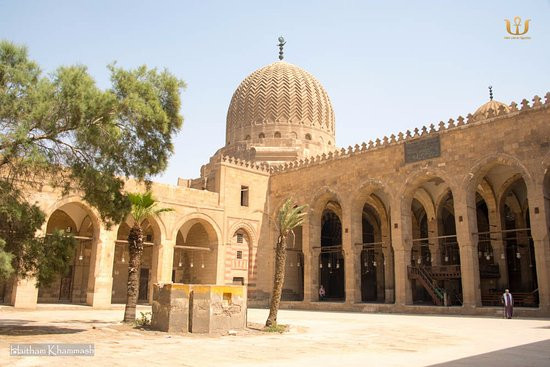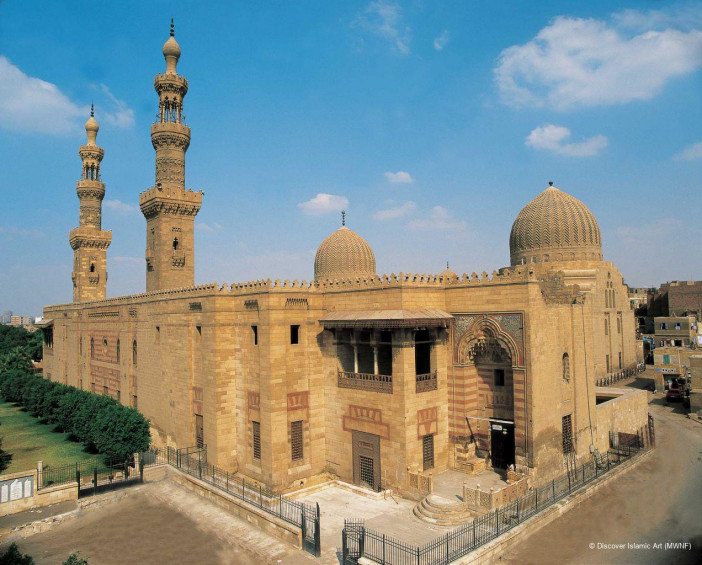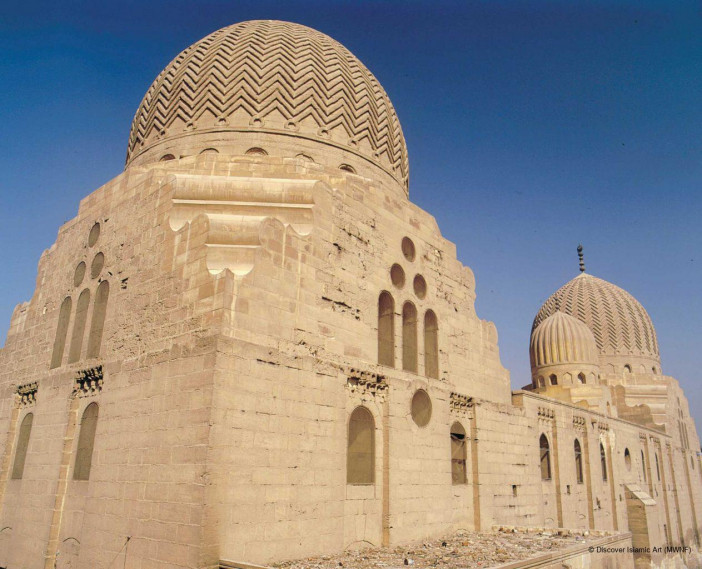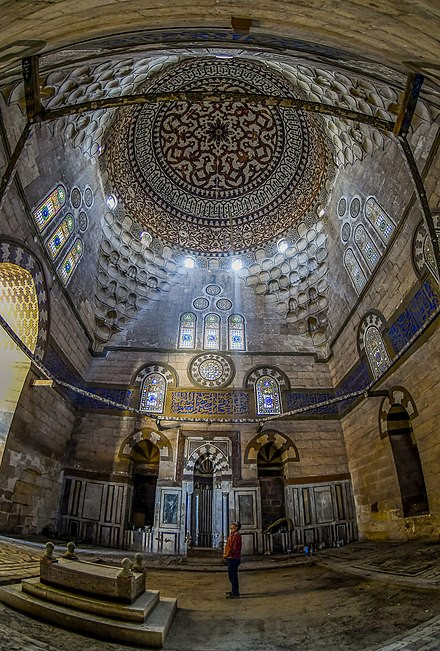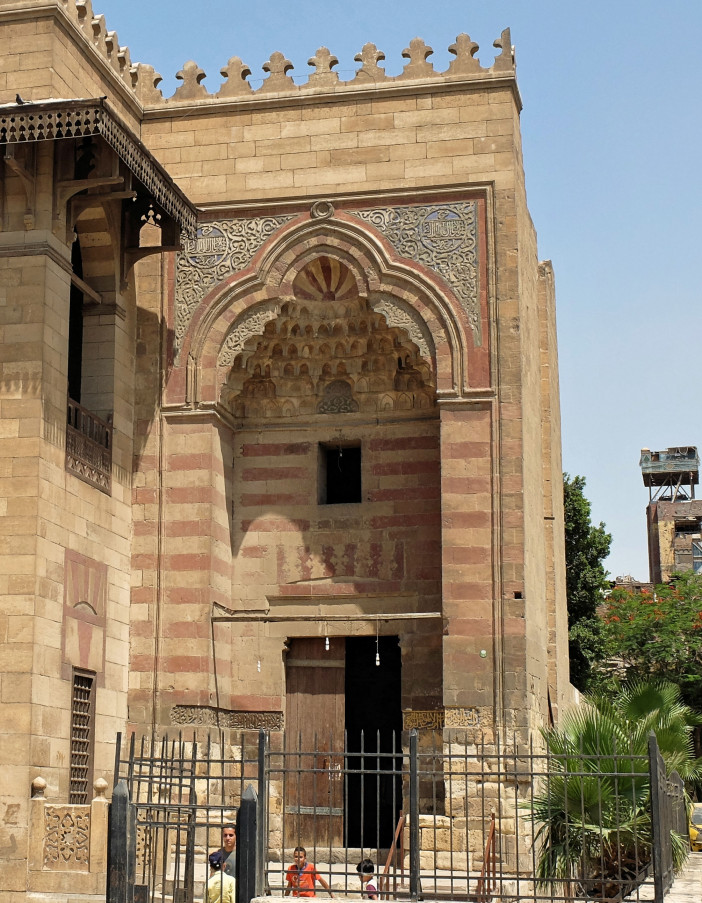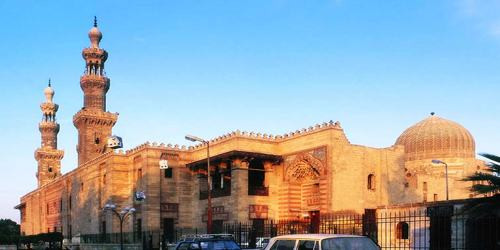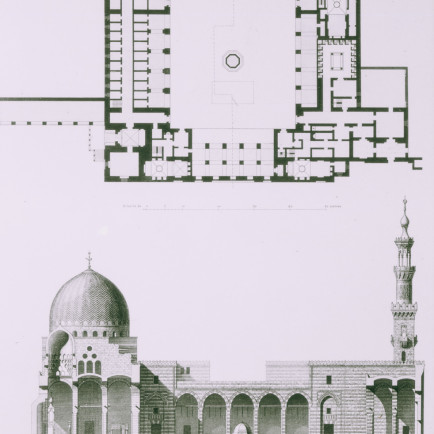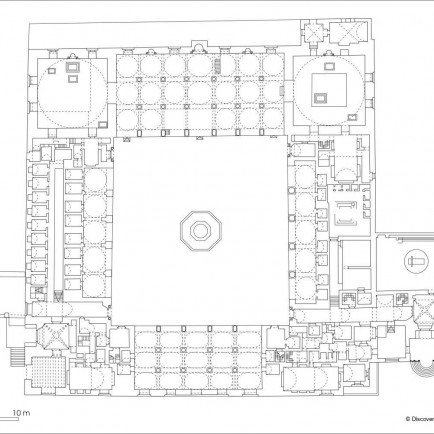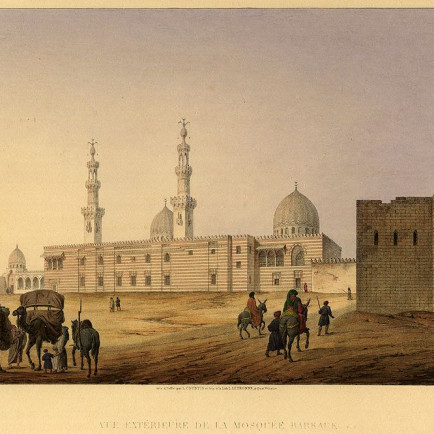The Khanqah of Faraj ibn Barquq
History
This tomb is one of the major monuments of Cairo and one of the three outstanding structures of the Northern Cemetery. The impetus for the development of the Northern Cemetery was initiated by the desire of Sultan Barquq, the first of the Circassian or Burgi Mamluks (1382-99), to be buried in the desert next to the tombs of venerated Sufi shaykhs, and not in his state monument in Bayn al-Qasrayn. The complex built for him by his son Faraj, at the foot of the Muqattam range, was in reality the first attempt to urbanize the desert. Originally, the complex was planned as the center of a large residential area that was to include, in addition to the main funerary endowment with its kitchens and living units, subsidiary establishments such as baths, bakeries, grain mills, rooms for travelers, alleys, and a marketplace. The complex of Sultan Faraj was built between 1398 and 1411.
Urban and Architectural
The complex was designated primarily as a khanqah (a residence and center for Sufis). It is centered around a large central courtyard, surrounded by living quarters to the west and adjoining a prayer hall or mosque section to the east, which in turn is flanked by two large mausoleums on either side. The complex also features two minarets, two sabils (water dispensaries), and two kuttabs (primary schools) in an almost symmetrical arrangement on its western facade; The overall layout is similar to that of a regular congregational mosque, which is indeed a function that the building also served.
The building has two entrances, one next to each kuttab, though the southwestern one is the most publicly accessible entrance today. The southwestern entrance also presents the only notable asymmetry in the architectural layout; instead of being integrated into the main square floor plan of the building, it projects outwards from the rest of the building and is attached to small square chamber which seemed to have been intended as a reception hall.
Description
The Khanqah of Faraj ibn Barquq (Arabic: خانقاه فرج ابن برقوق ) is a religious Islamic funerary complex built by the Mamluk Sultan Faraj ibn Barquq from 1400 to 1411 CE. It is located in Cairo, Egypt, in the Northern Cemetery which is a part of Cairo's historic necropolis districts. It is often considered one of the most accomplished works of Mamluk architecture in Cairo.
References
https://www.archnet.org/sites/2209
https://en.wikipedia.org/wiki/Khanqah_of_Faraj_ibn_Barquq
Details
Location
El-Gamaleya, El Gamaliya, Cairo Governorate, Égypte
Worshippers
3000
Owners
The Mamluk Sultan Faraj ibn Barquq
Year of Build
1400-1411
Area
6000
Drawings
Map
History
This tomb is one of the major monuments of Cairo and one of the three outstanding structures of the Northern Cemetery. The impetus for the development of the Northern Cemetery was initiated by the desire of Sultan Barquq, the first of the Circassian or Burgi Mamluks (1382-99), to be buried in the desert next to the tombs of venerated Sufi shaykhs, and not in his state monument in Bayn al-Qasrayn. The complex built for him by his son Faraj, at the foot of the Muqattam range, was in reality the first attempt to urbanize the desert. Originally, the complex was planned as the center of a large residential area that was to include, in addition to the main funerary endowment with its kitchens and living units, subsidiary establishments such as baths, bakeries, grain mills, rooms for travelers, alleys, and a marketplace. The complex of Sultan Faraj was built between 1398 and 1411.
Urban and Architectural
The complex was designated primarily as a khanqah (a residence and center for Sufis). It is centered around a large central courtyard, surrounded by living quarters to the west and adjoining a prayer hall or mosque section to the east, which in turn is flanked by two large mausoleums on either side. The complex also features two minarets, two sabils (water dispensaries), and two kuttabs (primary schools) in an almost symmetrical arrangement on its western facade; The overall layout is similar to that of a regular congregational mosque, which is indeed a function that the building also served.
The building has two entrances, one next to each kuttab, though the southwestern one is the most publicly accessible entrance today. The southwestern entrance also presents the only notable asymmetry in the architectural layout; instead of being integrated into the main square floor plan of the building, it projects outwards from the rest of the building and is attached to small square chamber which seemed to have been intended as a reception hall.
Description
The Khanqah of Faraj ibn Barquq (Arabic: خانقاه فرج ابن برقوق ) is a religious Islamic funerary complex built by the Mamluk Sultan Faraj ibn Barquq from 1400 to 1411 CE. It is located in Cairo, Egypt, in the Northern Cemetery which is a part of Cairo's historic necropolis districts. It is often considered one of the most accomplished works of Mamluk architecture in Cairo.


